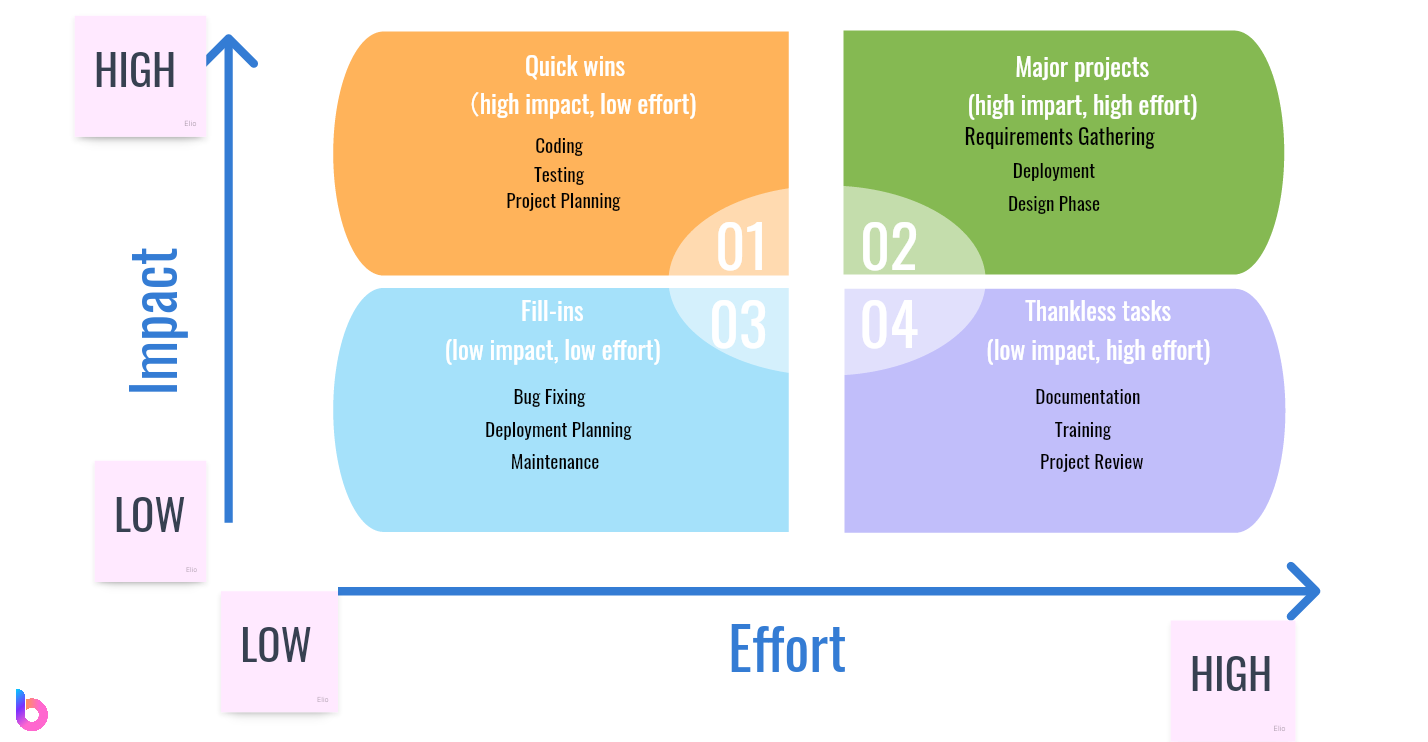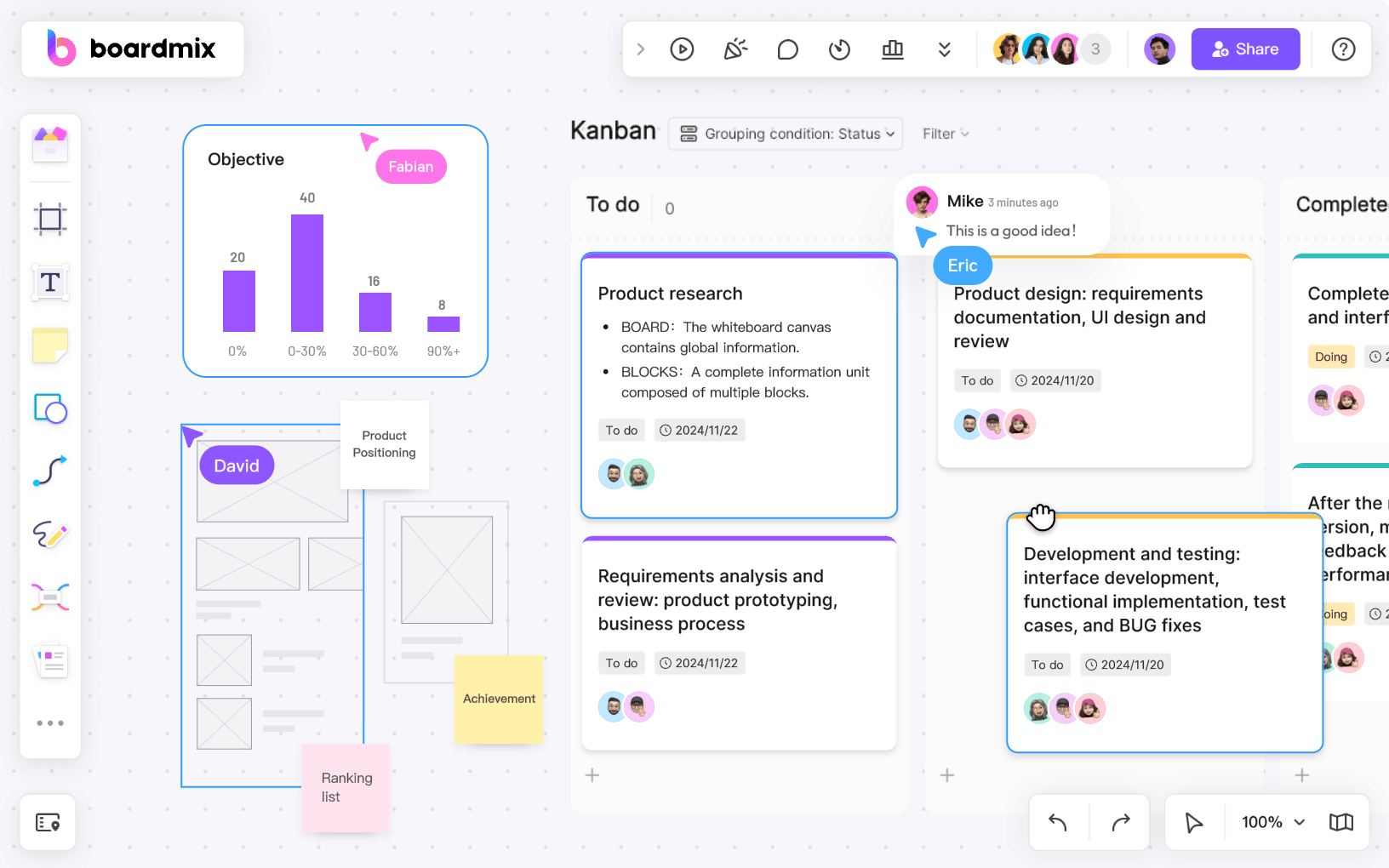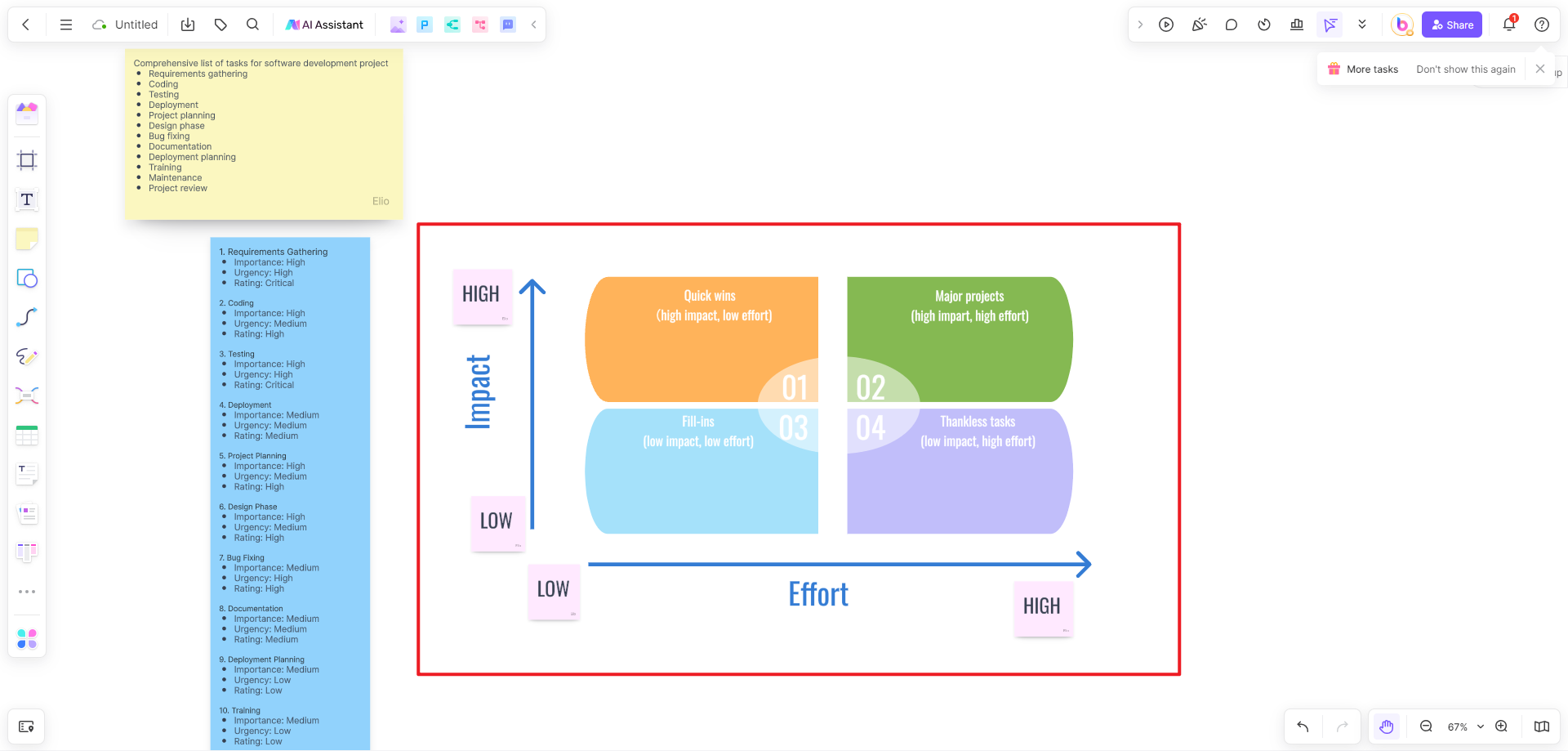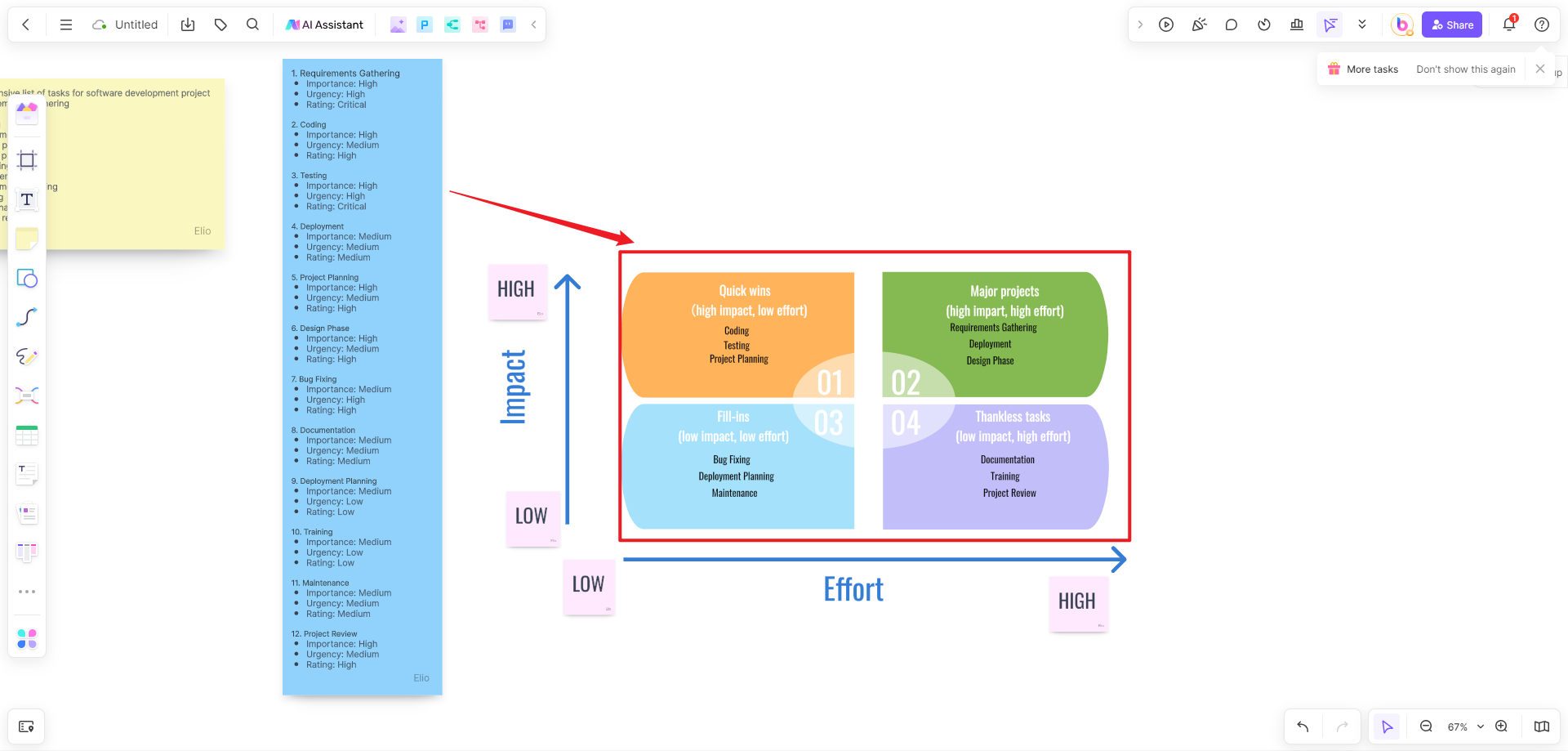What is an Action Priority Matrix?
The Action Priority Matrix, also known as the Eisenhower Matrix, is a tool used to prioritize tasks based on their urgency and importance. It helps individuals or teams determine which tasks should be addressed first and which can be postponed or delegated.

The matrix consists of four quadrants:
- Quadrant 1 (Urgent and Important): These are tasks that require immediate attention and have a significant impact on your goals or objectives. They should be prioritized and addressed as soon as possible.
- Quadrant 2 (Important but not Urgent): These are tasks that are important for long-term success but don't require immediate attention. They should be planned and scheduled to prevent them from becoming urgent in the future.
- Quadrant 3 (Urgent but not Important): These are tasks that require immediate attention but don't contribute significantly to your goals or objectives. They should be delegated or eliminated if it’s possible to free up time for more important tasks.
- Quadrant 4 (Not Urgent and Not Important): These are tasks that have little to no impact on your goals or objectives and can be considered distractions. They should be eliminated or minimized to focus on more important tasks.
By using the Action Priority Matrix, you can prioritize your tasks based on their urgency and importance, helping you make better decisions about where to allocate your time and resources. It's a simple yet effective tool for managing your workload and staying focused on what matters most.
Why Use an Action Priority Matrix?
The Action Priority Matrix is a useful tool for prioritizing tasks based on their urgency and importance. Here are a few reasons why you should consider using it:
1. Improved Time Management
By categorizing tasks into different quadrants based on their urgency and importance, you can better allocate your time and resources. This allows you to focus on tasks that are both urgent and important, while also making time for important but not urgent tasks.
2. Increased Productivity
Prioritizing tasks helps you stay organized and focused on what matters most. By addressing high-priority tasks first, you can make progress on important goals and objectives, leading to increased productivity and success.
3. Better Decision Making
The Action Priority Matrix provides a clear visual representation of your tasks, making it easier to see which tasks require immediate attention and which can be postponed or delegated. This helps you make informed decisions about how to best allocate your time and resources.
4. Reduced Stress
By effectively prioritizing tasks, you can avoid last-minute rushes and deadlines. This reduces stress and allows you to work on tasks more calmly and efficiently.
5. Enhanced Goal Achievement
The Action Priority Matrix helps you align your tasks with your goals and objectives. By focusing on tasks that are important and contribute to your long-term success, you can make progress toward your goals and achieve greater results.
Overall, the Action Priority Matrix is a valuable tool for managing your workload, increasing productivity, and achieving your goals. It provides a framework for prioritization and decision-making, helping you make the most of your time and resources.
What are the 5 Levels of Prioritization?
There are different ways to prioritize tasks, but one common framework includes the following five levels of prioritization:
- Critical: These are tasks that are extremely urgent and have a high impact on your goals or objectives. They require immediate attention and should be addressed as soon as possible.
- High: These are tasks that are important and have a significant impact on your goals or objectives. They should be prioritized and addressed after critical tasks.
- Medium: These are tasks that are moderately important and have a noticeable impact on your goals or objectives. They should be addressed after high-priority tasks.
- Low: These are tasks that are relatively less important and have a minimal impact on your goals or objectives. They can be addressed after critical, high, and medium-priority tasks.
- None: These are tasks that are not important and have no impact on your goals or objectives. They can be eliminated or postponed indefinitely.
By categorizing tasks into these five levels of prioritization, you can better manage your workload and allocate your time and resources effectively. It helps you focus on the most important and urgent tasks while minimizing time spent on less important tasks.
Boardmix Prioritization Matrix Example: A Practical Tool
The Boardmix Prioritization Matrix is a practical tool that can help you effectively prioritize tasks and make informed decisions. It allows you to assess tasks based on their importance and urgency, enabling you to allocate your time and resources wisely. Let's take a look at an example of how to use the Boardmix Prioritization Matrix.

Imagine you are a project manager working on a software development project. You have several tasks that need to be completed, and you're not sure where to start. Here's how you can use the Boardmix Prioritization Matrix to prioritize these tasks:
Step 1: Identify and List Tasks
Make a comprehensive list of all the tasks that need to be completed for your software development project. This could include tasks like requirements gathering, coding, testing, and deployment.

Step 2: Determine Importance and Urgency
Evaluate each task based on its importance and urgency. Importance refers to the impact or significance of the task on your project's success, while urgency refers to how soon the task needs to be completed. Assign a rating for each task based on its importance and urgency.

Step 3: Create the Matrix
Draw a two-axis matrix with importance on one axis and urgency on the other. Divide the matrix into four quadrants: Critical, High, Medium, and Low. Label the axes accordingly.

Step 4: Place Tasks in Quadrants
Place each task from your list into one of the four quadrants based on its importance and urgency rating. Critical tasks are both important and urgent and should be prioritized first. High-priority tasks are important but not as urgent and should be addressed next. Medium-priority tasks are urgent but not as important, and low-priority tasks are neither urgent nor important.

Step 5: Allocate Resources
Allocate your time, energy, and resources according to the priorities set by the Boardmix Prioritization Matrix. Focus on addressing tasks in the Critical and High quadrants first, as these tasks have the most impact on your project's success.

Step 6: Regularly Review and Update
Regularly review and update the Boardmix Prioritization Matrix as new tasks arise or as the importance and urgency of existing tasks change. This will ensure that you stay on top of your priorities and make necessary adjustments.
By using the Boardmix Prioritization Matrix, you can effectively prioritize tasks, make informed decisions, and ultimately achieve success in your software development project. Remember to regularly review and update the matrix to adapt to changing circumstances and maintain focus on what matters most.













